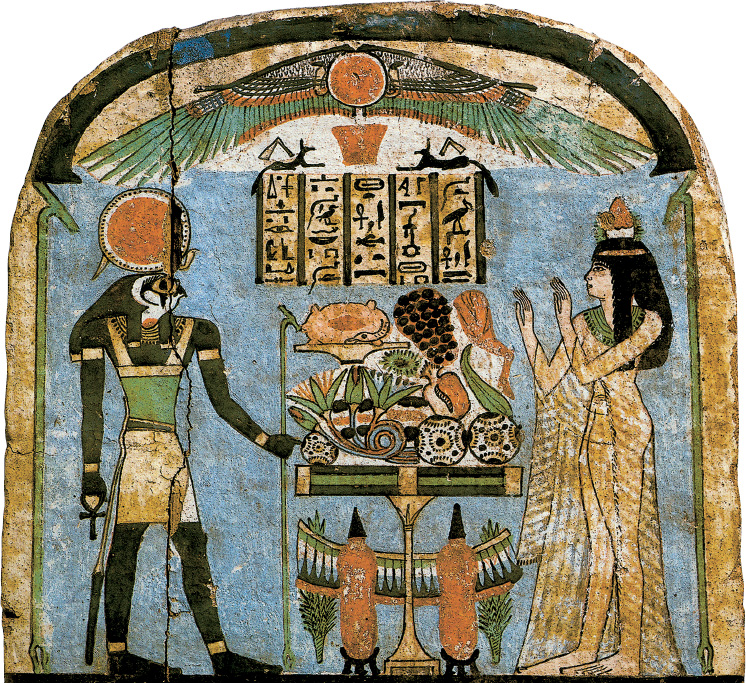Egyptian Society and Work
Egyptian society reflected the pyramids that it built. At the top stood the king, who relied on a sizable circle of nobles, officials, and priests to administer his kingdom. All of them were assisted by scribes, who used a writing system perhaps adapted from Mesopotamia and perhaps developed independently. Egyptian scribes actually created two writing systems: one called hieroglyphic for engraving important religious or political texts on stone or writing them on papyrus made from reeds growing in the Nile Delta, and a much simpler system called hieratic that allowed scribes to write more quickly. Hieratic writing was used for the documents of daily life, such as letters, contracts, and accounts, and also for medical and literary works. Students learned hieratic first, and only those from well-off families or whose families had high aspirations took the time to learn hieroglyphics. In addition to scribes, the cities of the Nile Valley were home to artisans of all types, along with merchants and other tradespeople. A large group of farmers made up the broad base of the social pyramid.

For Egyptians, the Nile formed an essential part of daily life. During the season of its flooding, from June to October, farmers worked on the pharaoh’s building programs and other tasks away from their fields. When the water began to recede, they diverted some of it into ponds for future irrigation and began planting wheat and barley for bread and beer, using plows pulled by oxen or people to part the soft mud. From October to February farmers planted and tended crops, and then from February until the next flood they harvested them. Reapers with wooden sickles fixed with flint teeth cut the grain high, leaving long stubble. Women with baskets followed behind to gather the cuttings. Last came the gleaners — poor women, children, and old men who gathered anything left behind.
As in Mesopotamia, common people paid their obligations to their superiors in products and in labor, and many faced penalties if they did not meet their quota. One scribe described the scene at harvest time:
And now the scribe lands on the river bank and is about to register the harvest-tax. The janitors carry staves and the Nubians rods of palm, and they say, Hand over the grain, though there is none. The farmer is beaten all over, he is bound and thrown into a well, soused and dipped head downwards. His wife has been bound in his presence and his children are in fetters.5
Peoples’ labor obligations in the Old Kingdom may have included forced work on the pyramids and canals, although recent research suggests that most people who built the pyramids were paid for their work. Some young men were drafted into the pharaoh’s army, which served as both a fighting force and a labor corps.